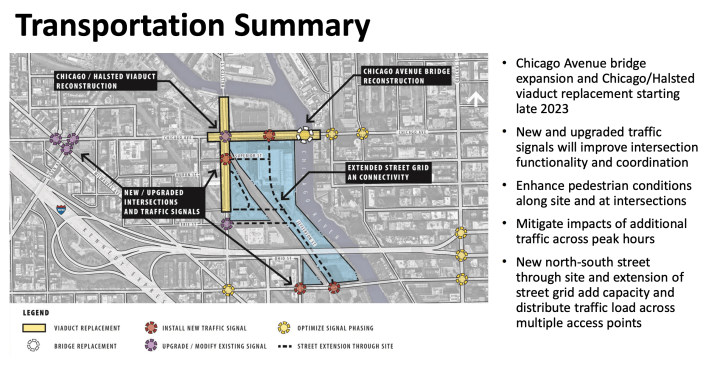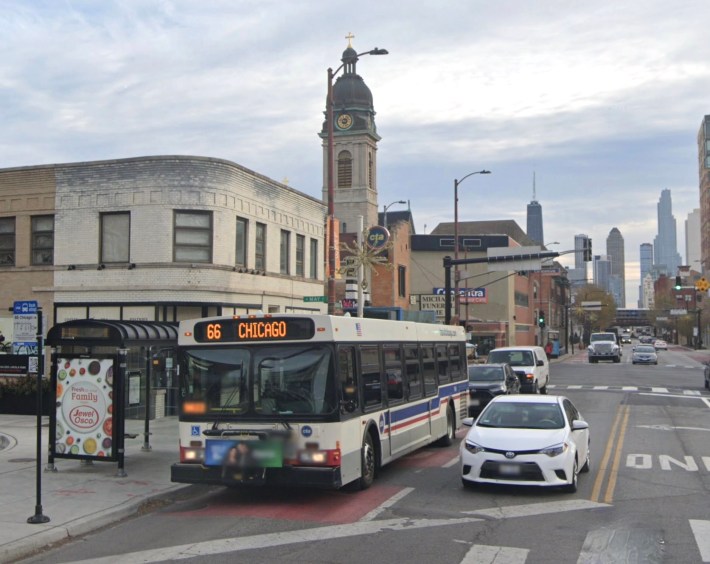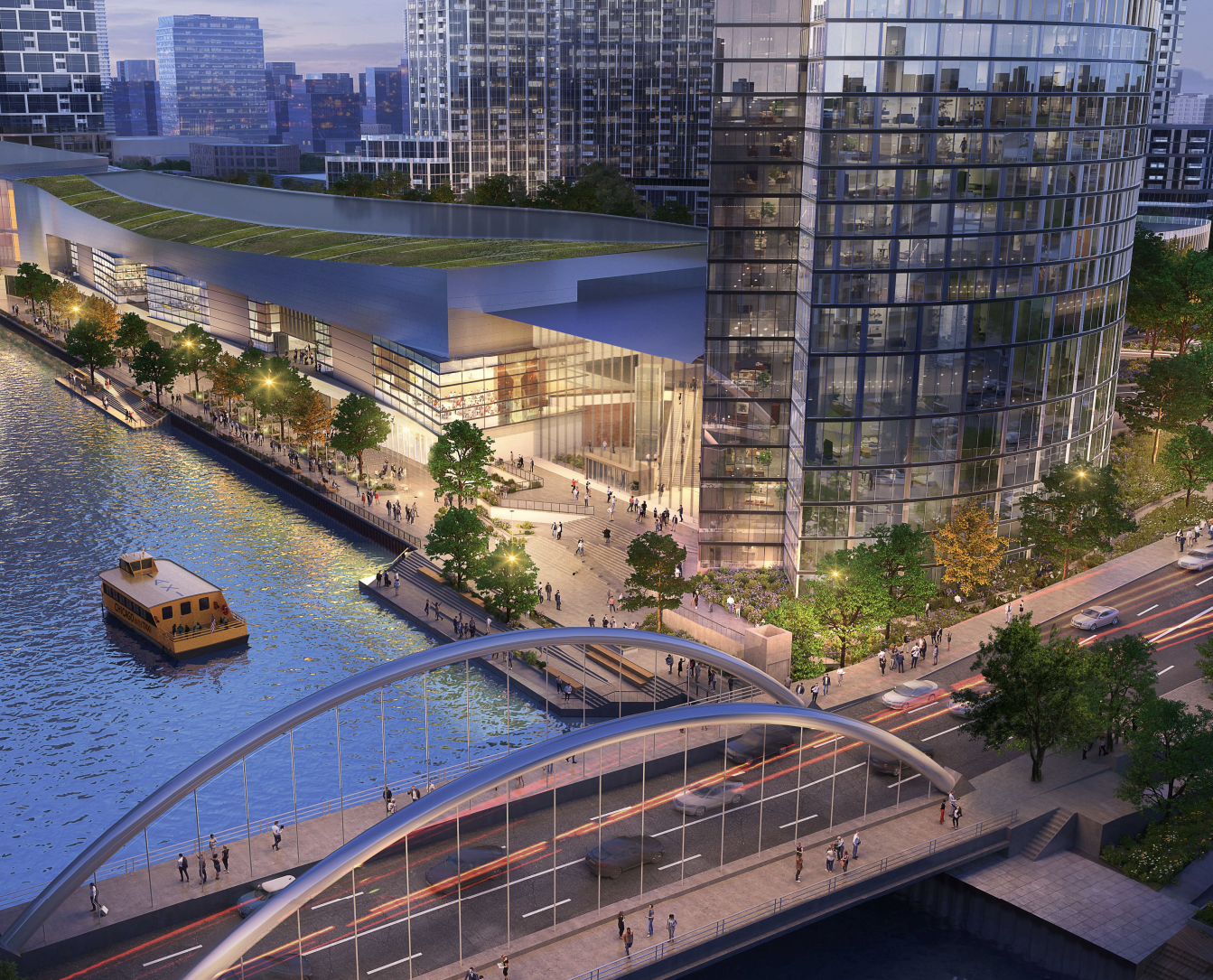If we have to have a giant casino on Chicago's Near North Side, can we at least make it walk/bike/transit-friendly?
On Monday the city officials and Bally's Corporation hosted a public input meeting on Chicago's upcoming massive $1.7 billion gambling and entertainment venue. It will be located on the site of the Tribune Publishing Center, located at the southeast corner of Chicago Avenue and Halsted Street, on the west bank of the North Branch of the Chicago River, a 30-acre property. The hearing included discussions of the building design, infrastructure, traffic issues and other related topics.
According to a Crain's report on the meeting, initial plans for a foot bridge over the river a little south of Chicago Avenue were scrapped, and the proposed density of part of the development was reduced, in response to previous feedback from neighbors. During the hearing, traffic consultant Tim Doron said a detailed traffic report would be released later this week. He added that the study found there would be little impact on rush-hour traffic congestion in the area, although traffic will likely increase at night when patrons arrive to gamble or attend concerts.
The Chicago Department of Transportation is planning various interventions in an effort to mitigate casino-related traffic impacts. The Chicago Avenue river bridge will be replaced and widened, and the Chicago/Halsted viaduct and bridge will be rebuilt. These projects are slated to begin in 2023 and wrap up within two years.

New streets will be built within the site, with the goal of "add[ing] capacity and distribut[ing] traffic load across multiple access points," CDOT says. Four new stoplight intersections will be added, and several other traffic signal locations will be upgraded. And the department says it will "enhance pedestrian conditions along [the] site and at intersections."
The Bally's proposal goes before the Chicago Plan Commission for a vote next Monday, December 12.
In a recent blog post, Active Transportation Alliance director of planning David Powe noted that the casino's transportation plan is car-centric, largely overlooking the needs of people who walk, bike, and ride buses in the area. (The plan does call for a new Divvy station and water taxi stop.)
That includes the many of the blue-collar workers who currently commute to the neighborhood, as well as the those who will work service positions at the new venue in the future. While car traffic will increase on Chicago Avenue and Halsted Streets, two of the city's busiest bus and biking routes, nothing is planned to help make these modes safer and more efficient. As it stands, increased private traffic will slow down bus riders and endanger people on bikes.

"We ask that Bally’s and the city of Chicago work with CDOT and CTA to implement 'bus priority zones' on Hasted Street and Chicago Avenue to keep two of our busiest bus routes flowing smoothly through the casino site," Powe wrote. "We also want to see safer bike and pedestrian infrastructure along the two streets... This project prioritizes leisure travelers in single occupancy vehicles over CTA riders traveling to the site or passing through the area."
Powe noted that, during a time when Chicago should be speeding up bus service in order to increase ridership and reduce crashes, congestion, and pollution, the current Bally's plan will slow transit down. Instead, he noted, CDOT should install bus-only lanes on Chicago Avenue and Halsted Street, and implement transit signal priority, in keeping with the city's Better Streets for Buses initiative to improve transit service across Chicago.
I testified to that effect at the hearing on Monday - bus lanes dedicated at ALL TIMES. Also, the casino should run shuttle buses on Halsted St between the North & Clybourn and Grand & Milw. L stops, and on Chicago Ave between the Chicago & Franklin and Chicago & Milw. L stops.
— Jim A. (@JimA21754232) December 7, 2022
In addition, Halsted is identified as a Crosstown Bike Route in the Chicago Streets for Cycling Plan 2020, so it should get protected or raised bike lanes.
"We must speak up for bus priority lanes on Chicago and Halsted at the permanent casino site, as well as for safe biking and pedestrian access along both streets," Powe concluded. "With the planned intersection improvements and upcoming construction, we have an opportunity to improve mobility for everyone!"
Indeed, when it comes to having a casino transportation plan that improves, rather than degrades, sustainable transportation and traffic safety, we can't leave matters to chance. We'll keep you posted on more opportunities to provide input on the transportation plan.





